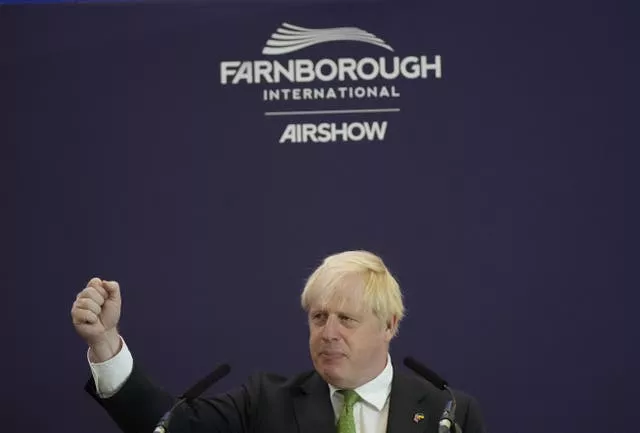For the second time in three years, tens of thousands of Conservative Party members will have the chance to choose the next UK prime minister.
Last time around, when members opted for Boris Johnson, the UK had still not left the EU and Brexit remained one of the key issues dividing the country.
Now, party members will vote amid a cost-of-living crisis, the war in Ukraine and the after-effects of the Covid-19 pandemic.
But one of the most straightforward questions remains the most puzzling: how many party members are there?

The number is surprisingly unclear, as centralisation efforts on membership data have only got under way recently, and the party has chosen not to tell the Electoral Commission its exact membership figures.
Around 160,000 members were eligible to vote in the previous leadership election that saw Mr Johnson defeat Jeremy Hunt, but that number is expected to have increased since then.
Tim Bale, professor of politics at Queen Mary University of London, suggests it could have risen to 175,000, but it is impossible to verify.
What is certain is that many members will vote over the coming weeks, with turnout reaching 87 per cent in the 2019 leadership contest.
In 2005, the figure was 78 per cent.

Prof Bale, co-author of Footsoldiers: Political Party Membership In The 21st Century, is keen to dispel some myths around Tory party members.
Contrary to conventional wisdom, he says, Conservative activists are “less ideological than MPs”.
He adds that they are not “obsessed with who can use what bathroom” and issues over trans rights.
“They probably won’t be quite as obsessive about politics and quite as familiar, for example, with the MPs, even their own MPs, as some people think. Most of them will pay their subs, sit back, agree with the party and follow it in the media,” he says.
Like any British political party, Conservative members occupy a demographic niche that is far from representative of the wider UK population.
Paying a standard annual fee of £25, card-carrying members no longer actually receive plastic cards as the party switched to paper certificates signed by the prime minister for environmental reasons.
Not all members could be termed activists, but all will receive regular updates from the party and invites to Conservative events.
Prof Bale said that in the three years since Mr Johnson was elected leader, the make-up of Tory party members has remained largely the same.
It is, he said, made up of more men than women with 40 per cent over the age of 65.
Around 95 per cent of members identify as white British, while the vast majority are so-called ABC1s – those who are better off and in higher-salaried jobs.
Tory members are twice as likely to live in the south of England compared with the population of Britain as a whole.
When it comes to party members’ values, Prof Bale says they are not as keen as MPs on shrinking the state, cutting spending and reducing taxes.
“MPs are much more ‘conservative’ on the economy than members,” he says.
“The reverse is true when it comes to their social attitudes, when it comes to underlying social values, they tend to be quite socially conservative and more so than Tory MPs.”
He says party members retain traditional conservative values, including wanting politicians to be tough on crime and tough on immigration.
As for what Tory members look for in a party leader, research from a 2015 project by Queen Mary University and Sussex University suggests priorities include a strong figure in touch with ordinary people, with clear political beliefs who can unite the country.
The extent to which those priorities may have changed in the intervening years may help determine whether it is Rishi Sunak or Liz Truss who is handed the keys to Number 10 in September.







